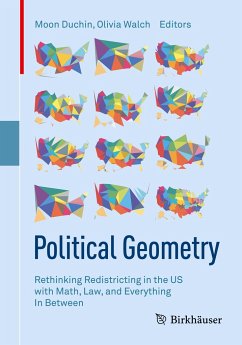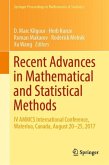"Why does my congressional district look like a salamander?" Politically engaged citizens have been asking this question for far too long. This volume collects perspectives from a wide cross-section of disciplines to explain what drives gerrymandering, why it can be hard to stamp out, and how we might go about fixing it. With topics ranging from the Voting Rights Act to Markov chains to the geography of communities, this book serves as a 21st century toolkit for how we can better approach this corrosive phenomenon.
The volume editors gather experts from a variety of fields to provide as many different perspectives on gerrymandering as possible. Thanks to the breadth of expertise found across these chapters, ranging from lawyers to mathematicians to civil rights activists, readers will discover new ways of thinking about redistricting in the United States. Illustrations and helpful walkthroughs appear throughout to clearly explain otherwise complex ideas from these areas. Political Geometry is a must-have for anybody interested in political representation in the United States elections, and for anyone who's ever thought, "There must be a better way to do this."
The volume editors gather experts from a variety of fields to provide as many different perspectives on gerrymandering as possible. Thanks to the breadth of expertise found across these chapters, ranging from lawyers to mathematicians to civil rights activists, readers will discover new ways of thinking about redistricting in the United States. Illustrations and helpful walkthroughs appear throughout to clearly explain otherwise complex ideas from these areas. Political Geometry is a must-have for anybody interested in political representation in the United States elections, and for anyone who's ever thought, "There must be a better way to do this."
"It is worth knowing that the book includes numerous sidebars, and provide a kind of primer for the novice. These ensure that readers can come to the book from varied backgrounds without fear of being shut out by jargon or assumed prior knowledge. Political Geometry excels at describing the difficult problem of redistricting because it has managed to showcase the interdisciplinary nature of the problem, giving each facet consideration and weight." (Andrew Schultz, The Mathematical Intelligencer, Vol. 147 (1), March, 2025)








